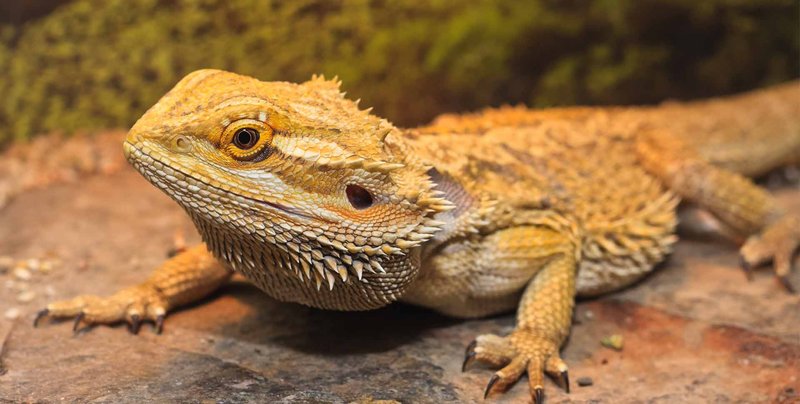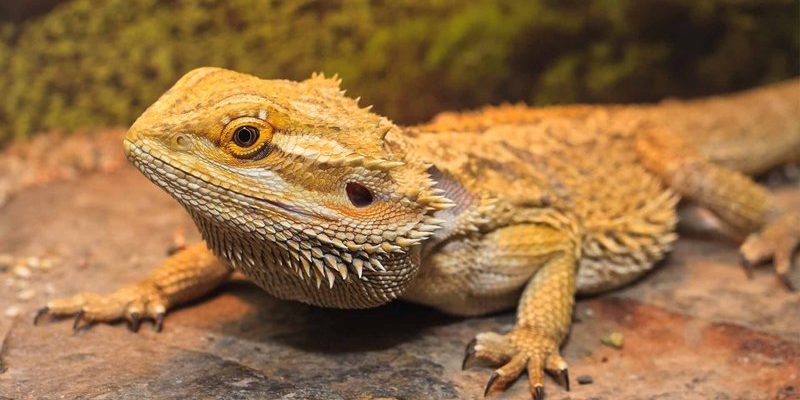
Imagine for a moment that you’re wandering through the arid landscapes of Australia, where bearded dragons bask in the warm sun on rocky outcrops. These lizards are not just there for looks—they play a crucial role in their ecosystem. However, their populations are declining due to habitat loss, climate change, and the pet trade. This raises an important question: What’s being done to help them? Buckle up, because we’re about to dive into the world of bearded dragons, their conservation status, and the efforts to keep them thriving.
Understanding the Conservation Status of Bearded Dragons
To get a grasp on the bearded dragon’s standing in the wild, we need to look at what “endangered” actually means. The term typically refers to species at risk of extinction, either in the wild or across their entire range. The bearded dragon, specifically the Pogona vitticeps, isn’t classified as endangered on a global scale. However, local populations can still face challenges that threaten their survival.
In Australia, where these lizards originate, their population has shown signs of decline due to various factors. Urban development, agriculture, and land clearing can fragment their habitats, making it harder for these lizards to find food, breed, and thrive. You might be wondering why it’s important to pay attention to these changes. Well, just like losing a favorite coffee shop, losing a species can disrupt an entire ecosystem. Each animal plays a part, and bearded dragons are no exception.
Main Threats Facing Bearded Dragons
Recognizing the threats to bearded dragons helps us understand why conservation efforts are essential. What exactly is putting these lizards at risk? Let’s break it down:
- Habitat Loss: As cities expand and agriculture increases, the natural habitats of bearded dragons are shrinking. This loss of space means fewer places for them to live, hunt, and bask in the sun.
- Climate Change: Changes in weather patterns can impact food availability and nesting sites for bearded dragons. If temperatures rise too much, their typical habitats may become unsuitable.
- Pet Trade: The popularity of bearded dragons as pets has led to increased capture from the wild. While many are bred in captivity today, the wild population still suffers from over-collection in some areas.
- Pests and Predators: Introduced species, like feral cats and foxes, can pose a significant threat to bearded dragon populations, preying on them or competing for food.
If you think about it, each of these threats is like a domino in a line. When one falls, it can knock over the others, leading to a more significant problem for the entire species.
Conservation Efforts in Action
So, with these threats looming, what’s being done to help protect the bearded dragon? Several initiatives are focused on conserving their habitats and populations.
First off, there are dedicated organizations working hard to protect natural habitats. These groups focus on habitat restoration, ensuring that bearded dragons have the environment they need to thrive. This might involve replanting native vegetation or creating wildlife corridors to connect fragmented habitats.
Additionally, educating the public about the needs of bearded dragons plays a vital role. By spreading awareness, we can inspire people to support conservation efforts. Schools, communities, and local governments are often involved in these educational initiatives, reinforcing the idea that every creature, no matter how small, has value.
Role of Legislation and Policies
Legislation can be a powerful tool in conservation. In Australia, there are laws in place aimed at protecting wildlife, including the bearded dragon. These regulations help ensure that land use practices do not harm their habitats.
Protected areas, like national parks, also contribute to conservation efforts. These regions provide safe havens where bearded dragons can live without the threat of habitat destruction or human interference. From national parks to wildlife reserves, these protected spaces offer a glimpse into what a healthy environment looks like for these lizards.
Community Involvement and Citizen Science
Community involvement can make a real difference in conservation efforts. Local residents can participate in monitoring bearded dragon populations or helping with habitat restoration projects. Citizen science initiatives encourage everyday people to contribute to research and conservation efforts, ensuring that even non-experts can help make an impact.
Plus, having a community that cares about local wildlife fosters a sense of pride. When residents see themselves as stewards of the environment, they become champions for the bearded dragon and other species in their area.
The Importance of Captive Breeding Programs
Captive breeding programs are vital for species that face significant threats in the wild. These programs focus on breeding bearded dragons in controlled environments to help bolster their populations.
Captive breeding has several benefits. For one, it reduces the pressure on wild populations from the pet trade. Additionally, these programs can help ensure genetic diversity, making the species stronger and more adaptable over time. Once the populations are stable, some individuals may even be reintroduced into their natural habitats.
While this strategy doesn’t replace the need for habitat protection, it serves as a valuable backup plan to prevent extinction.
What Can You Do to Help?
You might be wondering how you can make a difference for bearded dragons and other wildlife. Here are some simple but impactful ways to get involved:
- Educate Yourself and Others: Share what you’ve learned about bearded dragons and their conservation. Knowledge is power!
- Support Conservation Organizations: Donating to or volunteering with organizations dedicated to wildlife conservation can help fund critical projects and initiatives.
- Choose Responsible Pet Ownership: If you’re considering a bearded dragon as a pet, adopt from a reputable breeder or rescue rather than purchasing from a pet store.
- Advocate for Wildlife Protection: Get involved in local efforts to protect natural habitats and wildlife, and encourage others to join the cause.
Every action, no matter how small, adds up to make a significant difference.
Wrapping Up: The Future for Bearded Dragons
So, is the bearded dragon endangered? While they aren’t classified as endangered globally, local populations face various threats that require attention. Fortunately, collaborative efforts in conservation, education, and community involvement offer hope for their future.
The bearded dragon is a unique and charming species that reminds us of the beauty of our natural world. By understanding the challenges they face and supporting conservation efforts, we can help ensure that future generations will get to know and admire these incredible lizards. Together, we can help keep bearded dragons basking in the sun for years to come.

